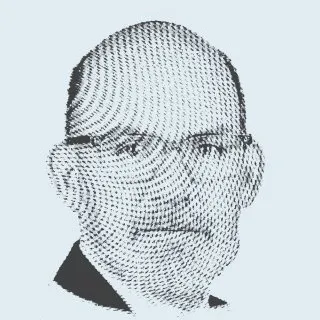“Damascus overwhelms and overpowers,” as the Syrian saying goes. With the layers of civilization that have accumulated over the city (Aramean, Greek, Roman, Byzantine, Umayyad, Ottoman, French, and beyond) it has enjoyed a unique ability to adapt and evolve for thousands of years, becoming a melting pot in which civilizations, cultures, and religions meet, as well as a hub for continental trade.
Damascus owes its unique and sustainable urban heritage to its cultural elasticity, which has allowed it to maintain its prominence over centuries, both as a center of early Christian empires and a major city in Islamic history later on. When the Umayyads chose it as the capital of their vast empire, they found in the city an irreplicable laboratory for putting Umayyad pragmatism into practice. First established by Muawiya ibn Abi Sufyan, the Umayyad approach balanced political dominance and respect for cultural and religious plurality.
In this sense, the city has always done more to change its people and those who came to it, through its profound capacity for embracing diversity and accommodating contradictions, more than they have done to change the city. Newcomers swiftly "Damascanize," adopting the hallmark characteristics of its urbanity, people, markets and houses: social flexibility and a mindset that seeks mutual gain that shuns religious or ethnic fanaticism.
Anyone who has had the privilege to enjoy the Damascene call to prayer knows this. The maqam Bayati and Sika scales exude simplicity and affection, offering a melody that soothes the soul. The minarets of Damascus reflect the harmony between religion and urbanity over the city's history, throughout which religion has naturally remained part of the urban fabric without overreach. With its simplicity and relative brevity, its calls to prayer highlight a civic consciousness that respects people's time and daily commitments. They are in tune with the broader rhythm of Damascus which is home to ancient social and cultural diversity.
I believe that the ultra-violence Assad’s regime deployed against Syria is a direct corollary to its tenacious civility. Only through brutal repression on a mythical scale could the regime subjugate the city and force it to go against its nature.
This is the city that Ahmad al-Sharaa, previously known as Abu Mohammad al-Golani (the leader of Hayat Tahrir al-Sham group) has entered- a city that rejected Assad’s legacy and turned the page on his reign as though it had never existed. He seems aware that his history as the leader of a militant group alienates him from Damascus and estranges him from its spirit.
While the city has been ruled by non-natives throughout its modern history (with the exception of the Damascene Shukri al-Quwatli), Damascus, with its long heritage of tolerance and pluralism, will rebuff any discourse founded on exclusion following Assad's fall, and it will not tolerate insidious rhetoric that creates a veneer of pragmatism and civility.
Some are counting on the fact that Golani has always been adept at adapting to political and military changes - since joining the extremist organizations Al-Qaeda of in Iraq, with the encouragement by the Assad regime itself, to his links with ISIS and his founding of the al-Nusra Front in Syria, culminating in its transformation into Hayat Tahrir al-Sham. However, there are no indications that offer insights into whether his history of evolution is a reflection of tactical changes or deep ideological shifts.
Moreover, Golani is not merely a figure attempting to rebrand himself. He represents a movement with deep Salafist roots. It views religion as a comprehensive framework that encompasses all aspects of governance and politics. Accordingly, the concern is that his current overtures could be political ploys and that his words and actions do not reflect genuine convictions. That is, there are apprehensions around his commitment to "Damascenization” - around whether he sincerely seeks to integrate into the cultural, social, and political fabric of Damascus, which 54 years of Baathist domination had failed to tear apart.
Beyond a shadow of a doubt, the legacy of Umayyad pragmatism and Damascene tolerance played a decisive role in shaping Damascus's identity and its affairs throughout history. Alone, however, they may not be sufficient to "tame" a figure like Golani.
The shifts we anticipate from Golani run up against complex challenges that threaten the stability of the city itself. Abandoning his hardline Islamist legacy entails making fundamental changes to his ideology and rhetoric, which could lead to internal splits and cost him the support of his popular base, which converges around his radical ideological project. More extreme factions could also emerge, seeking to compete with and outflank him.
At the same time, unless Golani genuinely changes, he will have trouble garnering the trust of Syria’s social mosaic, particularly the trust of minorities and the Damascene elites, who see his past as a fundamentalist hardliner as a threat to the city's tolerant and pluralistic identity.
In this regard, the final statement issued by the Arab Ministerial Contact Group, following their meeting to discuss Syria, immediately comes to mind. It presents a crucial roadmap for building a post-Assad Syria, through a holistic and sustainable political transition process under the supervision of the United Nations, in accordance with Resolution 2254. The stance of the Arab states primarily underscores the strategic significance of an inclusive process that represents all the communities of Syria and prevents any community from seizing monopolizing power or imposing its will on others.
The statement reinforces the foundations of the political transition that the world has called for, through its support for the formation of a transitional governing body, the drafting of a new constitution, and free and fair elections. This approach opens the door to "political Damascenization," that is, acquiescing respect for the pluralism and the tolerance that have defined the oldest inhabited city on earth.










